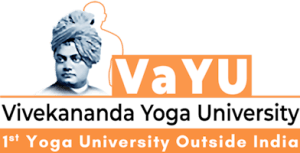Register for the Zoom webinar by clicking here.
Yoga & Exercise related Injuries
Yoga and exercise-related risks and injuries due to improper execution, inadequate training, and overuse are underestimated and underreported. Improper techniques, hasty overextension, pushing too hard and too soon can cause sprains, strains, and pains. Physical activity, exercise, and yoga can result in back pain, wrist sprains, hamstring strains, shoulder, knee, and hip injuries. More severe injuries may involve the head, neck, and spinal cord. Understanding the muscles and joints used during various yoga poses is crucial to preventing injuries and their management. Alterations in these poses can enhance or reduce their effectiveness.
Effective preventive measures include adhering to a personalized approach and understanding one's body’s limitations, pre-existing conditions, and unique needs. Listen to the body, be grateful for its functioning, and appreciate your practice. Be mindful of precautions, tips, and safety measures, but carry on. Go slow and be steady!
Speaker:
Dr. Nick Shroff MD, FACS, E-RYT Professor, Research & Teaching Faculty VaYU
Dr. Nick Shroff is a urologist, cancer surgeon, yoga-alliance teacher, and healthcare consultant. He practiced conventional Western/allopathic medicine for over four decades, integrating his skills with modern holistic therapy. His technical skills and compassion have guided him to facilitate healing at a deeper level.
Dr. Shroff leads by example, imparting the knowledge received from the revered spiritual masters. He has voluntarily conducted numerous yoga classes for yoga practitioners, seniors and cancer patients for several decades. He teaches integrated medical knowledge that combines yoga and holistic living, affirming their validation by modern science.
Dr. Shroff is the President of the American Prostate Cancer Foundation (APCF). He stands out as a social innovator utilizing his education, experience, and leadership skills, especially for the elderly and underserved populations in low socioeconomic communities.


